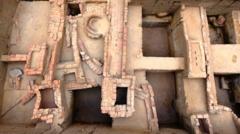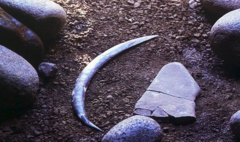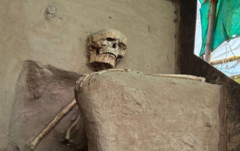In the annals of archaeology, Rakhaldas Banerjee stands as a pivotal yet overshadowed figure, famed for his significant discovery of Mohenjo-daro, which lies in the Sindh region of modern-day Pakistan. This archaeological site constitutes a crucial portion of the Indus Valley Civilization, one of the earliest urban cultures known to mankind, flourishing during the Bronze Age across a vast area that includes today’s Punjab and parts of Afghanistan.
Active in the early 20th century, Banerjee served as an archaeologist for the Archaeological Survey of India (ASI) during the British colonial period. Despite being renowned for his exploratory prowess and expertise in inscriptions, his contributions have become entangled in a web of disputes. His penchant for independence and tendency to sidestep established protocols led to a tarnished reputation and a legacy that has been, at times, unjustly minimized.
Remarkably, Banerjee's reports on the Mohenjo-daro findings remained unpublished by the ASI, provoking claims from his peers that senior officials, including ASI chief John Marshall, appropriated credit for his discoverie. According to historian Nayanjot Lahiri, Banerjee's inability to navigate the political landscape of the ASI and his tendency to confront authority contributed to the anonymity surrounding his work.
Born in 1885 in Bengal, Banerjee's curiosity about history was sparked by the rich medieval monuments of his hometown. After joining the ASI in 1910, he swiftly ascended the ranks, ultimately discovering Mohenjo-daro in 1919. His excavations revealed numerous artifacts and urban settlement layers, laying the groundwork for understanding this once-thriving civilization.
Despite his groundbreaking findings from 1922 to 1923, including the identification of seals that connected Mohenjo-daro to Harappa, financial backing for his projects dwindled by 1924. Banerjee requested a transfer to eastern India amid scrutiny over his administrative spending practices. The controversies only escalated with his rumored involvement in an idol theft at a Hindu shrine, leading to his resignation from the ASI.
Post-ASI, Banerjee worked as a university professor but struggled financially due to a lavish lifestyle. His time at Banaras Hindu University shortly preceded his untimely demise at the age of 45, leaving behind a complex legacy of both extraordinary discovery and murky controversies.
Today, Rakhaldas Banerjee's story serves not only as a testament to the challenges faced by pioneering explorers but also as a reminder of the importance of recognizing all contributors to the historical tapestry of civilizations long past.
Active in the early 20th century, Banerjee served as an archaeologist for the Archaeological Survey of India (ASI) during the British colonial period. Despite being renowned for his exploratory prowess and expertise in inscriptions, his contributions have become entangled in a web of disputes. His penchant for independence and tendency to sidestep established protocols led to a tarnished reputation and a legacy that has been, at times, unjustly minimized.
Remarkably, Banerjee's reports on the Mohenjo-daro findings remained unpublished by the ASI, provoking claims from his peers that senior officials, including ASI chief John Marshall, appropriated credit for his discoverie. According to historian Nayanjot Lahiri, Banerjee's inability to navigate the political landscape of the ASI and his tendency to confront authority contributed to the anonymity surrounding his work.
Born in 1885 in Bengal, Banerjee's curiosity about history was sparked by the rich medieval monuments of his hometown. After joining the ASI in 1910, he swiftly ascended the ranks, ultimately discovering Mohenjo-daro in 1919. His excavations revealed numerous artifacts and urban settlement layers, laying the groundwork for understanding this once-thriving civilization.
Despite his groundbreaking findings from 1922 to 1923, including the identification of seals that connected Mohenjo-daro to Harappa, financial backing for his projects dwindled by 1924. Banerjee requested a transfer to eastern India amid scrutiny over his administrative spending practices. The controversies only escalated with his rumored involvement in an idol theft at a Hindu shrine, leading to his resignation from the ASI.
Post-ASI, Banerjee worked as a university professor but struggled financially due to a lavish lifestyle. His time at Banaras Hindu University shortly preceded his untimely demise at the age of 45, leaving behind a complex legacy of both extraordinary discovery and murky controversies.
Today, Rakhaldas Banerjee's story serves not only as a testament to the challenges faced by pioneering explorers but also as a reminder of the importance of recognizing all contributors to the historical tapestry of civilizations long past.




















